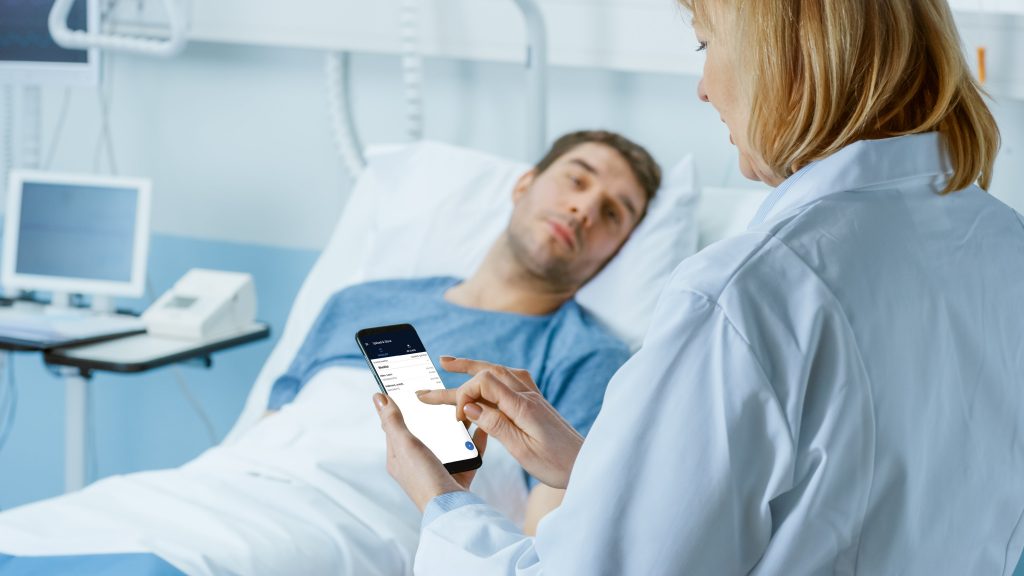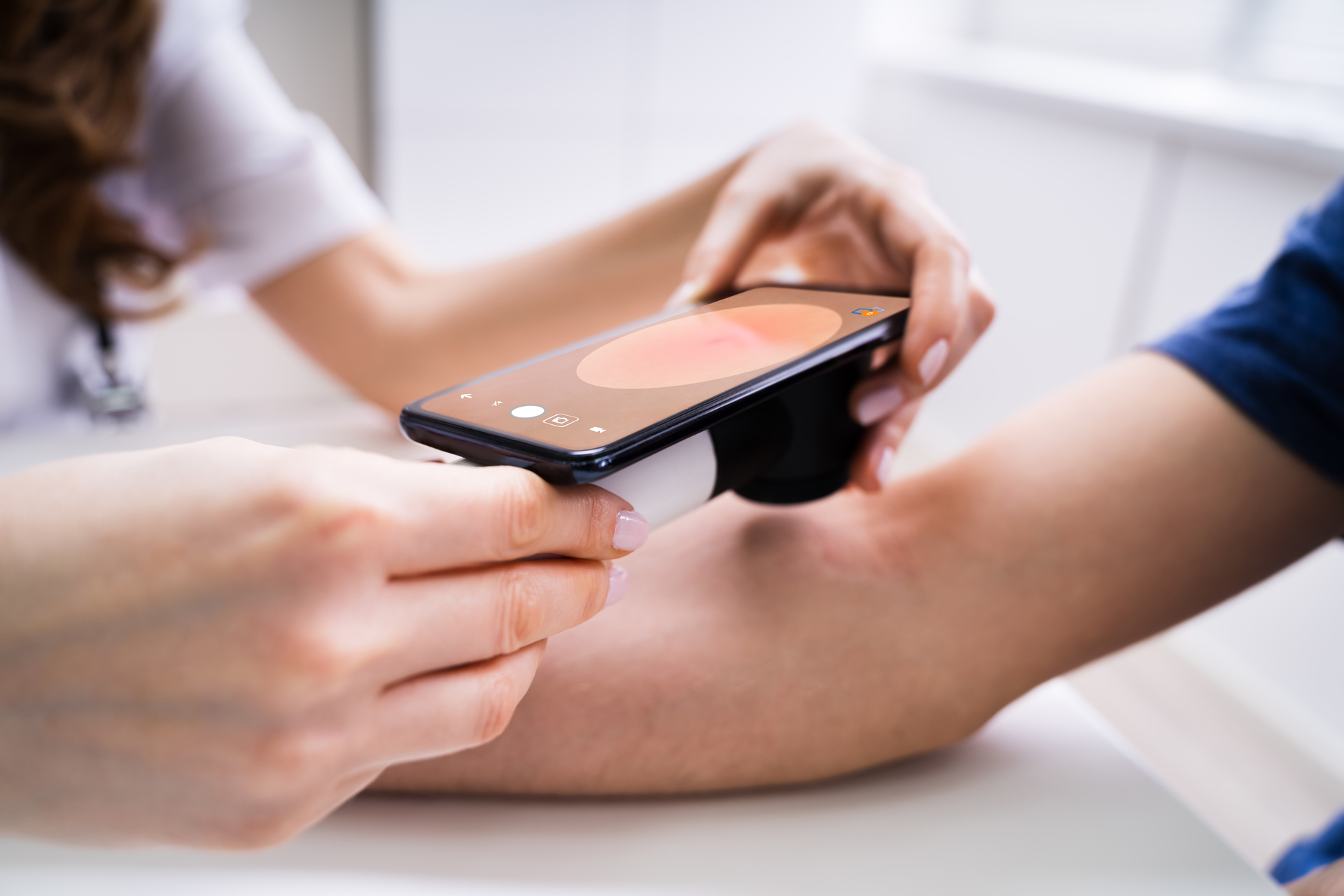Healthcare’s adoption of enterprise imaging is on the rise, and using one shared system for all medical multimedia leads to increased utilization of and access to images by specialties outside of radiology. Moreover, connecting mobile capture software to your enterprise imaging system boosts productivity further by enabling specialists and referring physicians to produce medical images and videos using their mobiles devices. This has also proven to improve satisfaction among physicians and patients, as it reduces lead times and complexity.
To help you select the right solution for mobile image capture, this article outlines ten important aspects to consider if you are to truly reap the benefits of enterprise imaging workflows.
Benefits of enabling mobile capture in the enterprise imaging system
Connecting the appropriate image capture software to the enterprise imaging system allows specialists to take photos directly using a smartphone, camera or tablet. Images are immediately uploaded and stored centrally in the enterprise imaging system and, via integration with the electronic medical record (EMR), they are accessible across the health system. Using mobile devices for image capture reduces lead times and costs—while also being more convenient for you, your colleagues and the patient. For example, instead of sending the patient for an additional appointment with an imaging department, images can be acquired directly during the first patient encounter. Mobile capture enables even primary care providers to take pictures.
A report[1] evaluating the implementation of mobile capture devices to capture and store clinical images concluded that it was useful or very useful for clinical practices and easy to use, and that most respondents wanted to continue using the app (eight out of nine). Although this study was small, it confirms one of the driving factors for implementing a mobile capture application—to increase user satisfaction among specialists, referring physicians and patients as image acquisition becomes easier and less time consuming. Additionally, the combination of greater utilization of and access to medical images, and the adoption of structured reporting, together with the possibility of linking images to reports, increases understanding of the diagnosis as reports become “richer.” It has also shown to lead to improved dialogue between patients and their physicians.

Select the right mobile capture application
Mobile capture applications are often offered as an add-on by various vendors used in the hospital IT environment, for example, your current EMR, picture archiving and communication system (PACS) or enterprise imaging vendor. Rolling out such an application entails a significant change in workflows and loss of control for imaging departments. It is therefore essential to ensure that the mobile capture software selected fulfills the most important requirements.
Ten aspects to consider when selecting a mobile image capture application
- Does the solution support order-based and encounter-based imaging workflows?
- The application, together with its integrations with your enterprise imaging system and your EMR, should support an end-to-end workflow. All the way from the EMR order, through the patient encounter, to the reporting physician and the distribution of the result.
- It should also support encounter-based workflows where images are taken without pre-existing referrals.
- Does the solution fulfill all necessary security requirements?
- Images should be encrypted using high-end encryption algorithms.
- All communication between clients and servers should use Hypertext Transfer Protocol Secure (HTTPS).
- The application should be able to handle purging of uncommitted patient data on lost or stolen devices.
- The solution should be tested and certified in penetration testing.
- Ensure that the security features of the application are HIPAA compliant.
- Does the solution allow for a scalable roll-out and an affordable business model as more users and devices are added?
- It is hard to predict how many users and devices will be introduced to the new workflow. Therefore, the solution should allow easy, on-demand roll-out to new users and devices within the enterprise.
- An affordable business model should allow usage to grow with a lower marginal cost per user and device as more are added.
- A subscription-based pricing model is preferable over a license-based model. Licenses can create barriers that impede growth, since these need to be negotiated, acquired and added.
- Is the solution built for the modern world where users are moving between patient homes without VPN connections—and sometimes even without internet access?
- The solution should support worklist caching for offline use.
- It should support secure and fast image acquisition offline while maintaining automatic association with the correct patient and order.
- Ensure the solution is built with security top of mind to handle the multitude of cyberthreats that stem from exposing the solution to the internet, for example, using a multi-layered server architecture.
- Does the application support various device types and vendors?
- If you have a mix of iPhones, iPads, and Android tablets and phones it is important you select a solution that supports all the device types that you need.
- If you have a mix of iPhones, iPads, and Android tablets and phones it is important you select a solution that supports all the device types that you need.
- Does the solution use standards for storing images and videos?
- With the advent of enterprise imaging solutions that integrate with various AI applications, the need for standardized access to media is more important than ever. Ensure images and videos are stored in non-proprietary formats accessible via standard interfaces, such as DICOM, DICOMweb and FHIR.
- With the advent of enterprise imaging solutions that integrate with various AI applications, the need for standardized access to media is more important than ever. Ensure images and videos are stored in non-proprietary formats accessible via standard interfaces, such as DICOM, DICOMweb and FHIR.
- Do you need to use additional storage areas for some images, or are they stored directly on your enterprise imaging platform?
- Multiple storage levels are expensive and add complexity and room for error. Therefore, the software should not require such extra storage areas—all media is preferably directly stored in the central enterprise imaging system.
- Multiple storage levels are expensive and add complexity and room for error. Therefore, the software should not require such extra storage areas—all media is preferably directly stored in the central enterprise imaging system.
- Is the application a CE–marked and FDA–listed medical device?
- To fully embrace the benefits of enterprise imaging and mobile capture applications, you and all other users need to rely on the system being safe—from technical, clinical and legal perspectives. This makes FDA listing and CE marking important, even for add-ons such as the mobile capture application. Remember that no chain is stronger than its weakest link.
- To fully embrace the benefits of enterprise imaging and mobile capture applications, you and all other users need to rely on the system being safe—from technical, clinical and legal perspectives. This makes FDA listing and CE marking important, even for add-ons such as the mobile capture application. Remember that no chain is stronger than its weakest link.
- Does the solution have support for capturing still images and videos in a highly streamlined workflow?
- Workflow efficiency should not be underestimated. The integration with the enterprise imaging system, together with the usability of the application, will determine how easy and efficient it is to use.
- Workflow efficiency should not be underestimated. The integration with the enterprise imaging system, together with the usability of the application, will determine how easy and efficient it is to use.
- Does the solution support the complete management of mobile capture—from user configuration to specific device settings—without additional third-party administration or app configuration tools?
- Mobile capture will be used by many and, in some cases, hundreds of different users with varying needs. It must therefore be possible to adjust configurations and access to the application to meet the requirements of different specialties in order to satisfy the needs of each user.
- For teaching hospitals, the ability to add keywords directly when images are captured will create a large pool of searchable images for teaching purposes.
Conclusions
There are real productivity benefits to be gained by enabling mobile image capture in your enterprise imaging system—both from a clinical workflow perspective, but also from the perspectives of patients and referring physicians—as it reduces lead times and increases satisfaction.
To ensure you leverage the full potential of these advantages, it is vital that you select the right mobile capture application. This article has provided you with ten important aspects to consider when comparing the available options.
